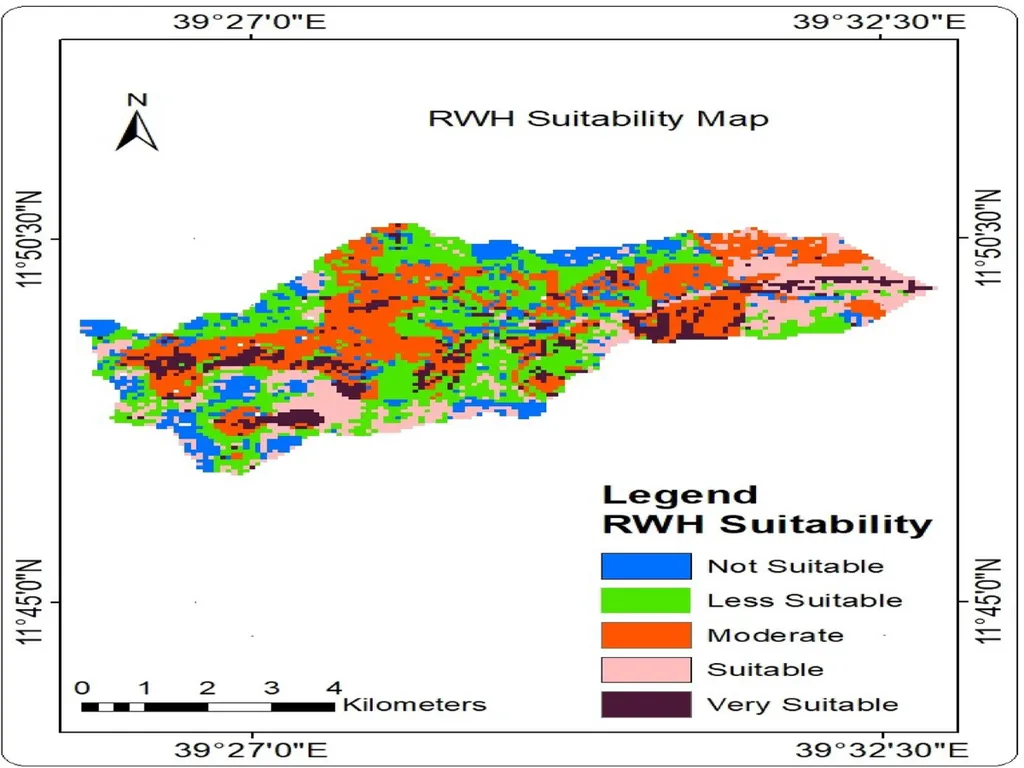In the arid landscapes of North Wollo, Ethiopia, where rainfall is as unpredictable as it is vital, a groundbreaking study is offering new hope for agricultural sustainability. Led by Daniel Desalegn from the Department of Water Resources and Irrigation Engineering at Woldia University, the research leverages geospatial technology to identify potential rainwater harvesting (RWH) sites, a critical step towards enhancing food security in the region.
The study, published in the journal ‘Discover Applied Sciences’ (translated as ‘Ketab-eh Asasi-eh Elmi’), employs a sophisticated GIS-based methodology to evaluate the suitability of various sites for rainwater harvesting. By integrating the Analytical Hierarchy Process (AHP) and Multi-Criteria Decision Analysis (MCDA), Desalegn and his team assessed five key physical parameters to determine the best locations for RWH structures.
“Rainwater harvesting has been promoted for years, but its adoption has been hindered by operational challenges and a lack of site-specific assessments,” Desalegn explains. “Our study aims to change that by providing a data-driven approach to identifying suitable sites.”
The findings are promising. Of the 525.3 hectares studied in the Gurnd watershed, 11% were found to be highly suitable for RWH, with an additional 18.1% suitable and 28.2% moderately suitable. This means that a significant portion of the watershed could potentially benefit from RWH, enhancing agricultural resilience and food security.
However, the study also revealed a stark reality: 65.2% of existing rainwater harvesting structures are non-functional. This highlights the need for better planning and maintenance, areas where the study’s methodology could make a significant impact.
The commercial implications for the energy sector are also noteworthy. As water scarcity becomes an increasingly pressing issue, the ability to harness and store rainwater efficiently could open up new opportunities for agricultural investments. This could lead to more stable food supplies, reduced energy costs associated with water transportation, and potentially even new business models centered around water management and storage solutions.
Desalegn’s research is not just about identifying suitable sites; it’s about transforming the way we approach water management in arid regions. By providing a robust, data-driven framework, this study could shape future developments in the field, influencing policy, investment, and technological innovation.
As the world grapples with the challenges of climate change and water scarcity, studies like this one offer a beacon of hope. They remind us that with the right tools and approaches, we can turn the tide on water insecurity and build a more sustainable future.

